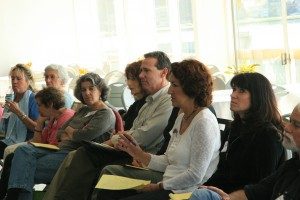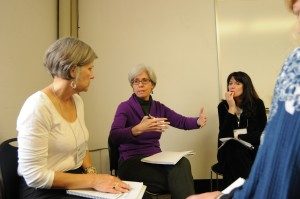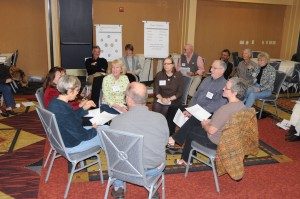The Understanding-Based Approach to Conflict
Background
 Our Understanding-based model developed out of a desire to support persons in conflict to work through their conflict together. Many forms of conflict resolution place the responsibility and authority for resolving the conflict in the hands of professionals. In the judicial system, the ultimate power is with the judge who resolves a dispute by deciding who is right and who is wrong under the law. In the pre-trial negotiation of legal conflicts, the manner that most legal disputes are resolved, it is the lawyers who usually have primary responsibility for shaping the outcome, subject to their clients’ final approval.
Our Understanding-based model developed out of a desire to support persons in conflict to work through their conflict together. Many forms of conflict resolution place the responsibility and authority for resolving the conflict in the hands of professionals. In the judicial system, the ultimate power is with the judge who resolves a dispute by deciding who is right and who is wrong under the law. In the pre-trial negotiation of legal conflicts, the manner that most legal disputes are resolved, it is the lawyers who usually have primary responsibility for shaping the outcome, subject to their clients’ final approval.
Mediation is thought to be different. However, many approaches to mediation often place great power, explicitly or implicitly, in the hands of the mediator who shuttles back and forth between the disputing parties in the effort to assess the situation and broker a deal. We view the challenge facing people in conflict is how they can together assume the responsibility for dealing with their conflict. Taking on that challenge is important for individuals and organizations in conflict in part because the results reached are much more satisfying and the path taken much more rewarding.
But we are also motivated by the larger challenge facing humanity to learn ways to work together to resolve the deep conflicts we face in today’s increasingly connected world. This aspiration has motivated us to explore a different path embodied in what we have come to term the Understanding-based approach to conflict.
How Our Model is Different
 In this approach, the conflict professional seeks to work directly with the parties in an effort to support their finding resolution to their conflict. Stated simply, we seek to support the parties in making knowing and informed choices together. We wish to do that in a way that is respectful of the parties and also fosters respect for themselves and for each other.
In this approach, the conflict professional seeks to work directly with the parties in an effort to support their finding resolution to their conflict. Stated simply, we seek to support the parties in making knowing and informed choices together. We wish to do that in a way that is respectful of the parties and also fosters respect for themselves and for each other.
In developing this approach, we do not feel so much that we are inventing something new but rather uncovering what is innately there. This is an essential point because many would say that parties to conflict lack the desire and the ability to go through conflict together, but for us it is that perception that frequently poses the greatest obstacle.
We believe the impulse to work through conflict together is waiting to be tapped and given room for expression. And the same is true for the capacity of those in conflict to work through their conflict together. It may be undeveloped, but it is often readily available to those who are motivated and given the support and structure that will allow it expression.
Role of Law and Lawyers
Mediators and collaborative professionals tend to be divided in how they approach the role of law in mediation and collaborative practice. Some rely heavily on what a court would decide if the case went to trial, authoritatively suggesting that law should be the controlling standard used to end the conflict. Others keep the law out, concerned that the parties might simply defer too readily to the law and miss the opportunity to find more creative decisions.
In this model, we welcome lawyers’ participation and include the law, but do not rely solely on it. The importance the parties give to the law is up to them. Our goal is to educate the parties about the law and possible legal outcomes and to support their freedom to generate their own creative solutions that may differ from what a court might decide. In this way, the parties learn that they can together reach agreements that respond to both their individual interests and their common goals while also being well informed about their legal rights and the judicial alternatives to a settlement.
 This approach to the law draws upon lawyers’ knowledge and skills in ways both similar to and different from their traditional roles. To participate in this problem-solving approach requires many lawyers to shift from reliance on a stance of adversary advocacy to one of collaborative support. For some lawyers, this approach can be a challenge, but a rewarding one. They are there to protect their clients and to inform them about the legal alternative while also supporting their active participation and open dialogue. The lawyers also participate in helping their clients design the process and in coming up with creative solutions to their conflict that may be quite different from what a court might do. We believe that in these ways, the lawyers may better serve their clients. In these and other respects, we seek to develop and utilize the potential to resolve conflict in ways that honor the parties, their differences and their relationship.
This approach to the law draws upon lawyers’ knowledge and skills in ways both similar to and different from their traditional roles. To participate in this problem-solving approach requires many lawyers to shift from reliance on a stance of adversary advocacy to one of collaborative support. For some lawyers, this approach can be a challenge, but a rewarding one. They are there to protect their clients and to inform them about the legal alternative while also supporting their active participation and open dialogue. The lawyers also participate in helping their clients design the process and in coming up with creative solutions to their conflict that may be quite different from what a court might do. We believe that in these ways, the lawyers may better serve their clients. In these and other respects, we seek to develop and utilize the potential to resolve conflict in ways that honor the parties, their differences and their relationship.
“The central quality of mediation…[is] its capacity to reorient the parties toward each other, not by imposing rules on them, but by helping them to achieve a new and shared perception of their relationship.”
— Lon Fuller, 1902 – 1978Author and Professor, Harvard Law School
